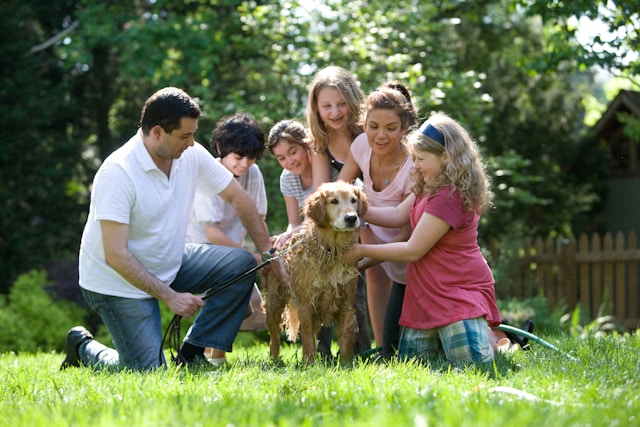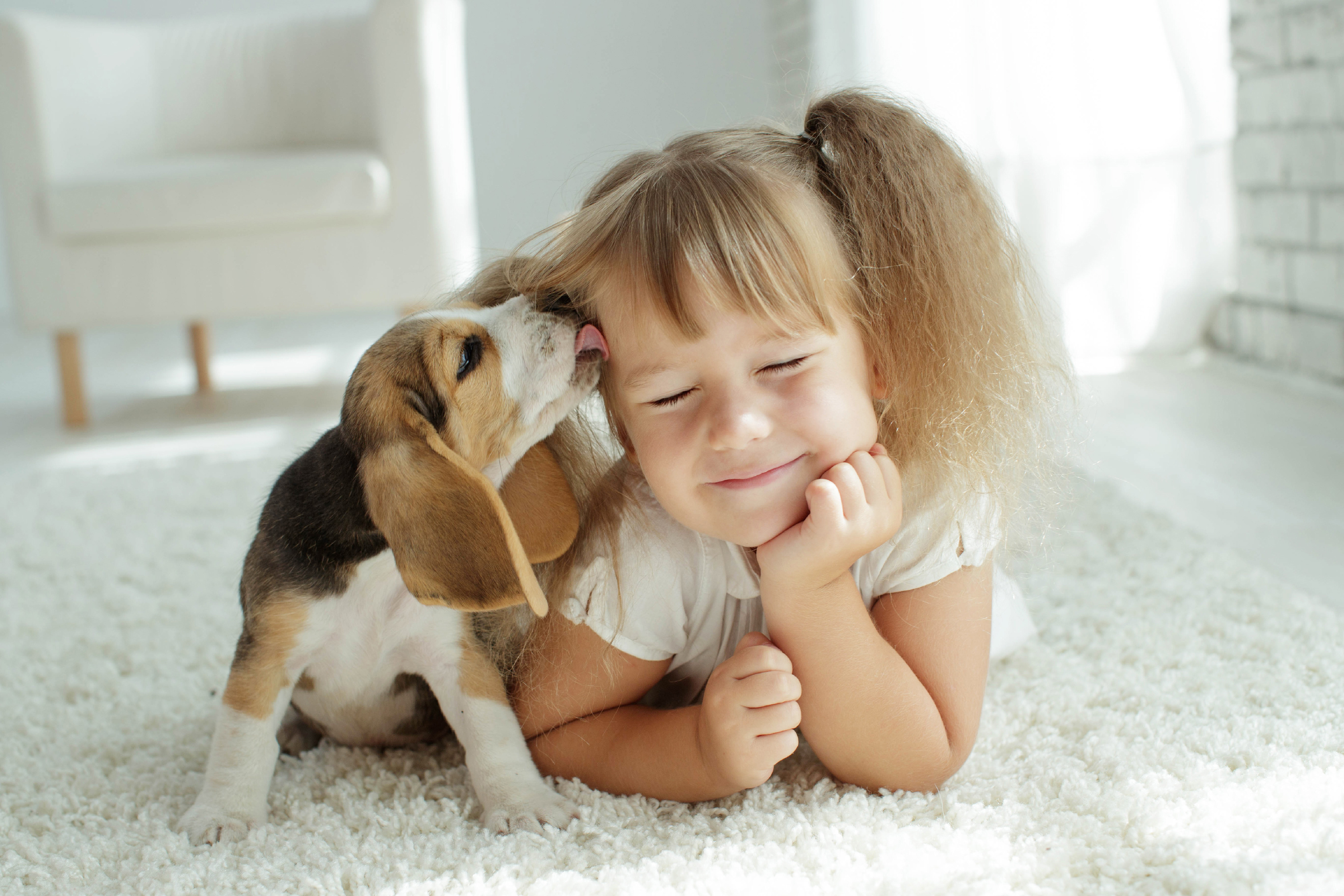Key Takeaways:
- Select Calm Breeds: Choosing a calm dog breed like Newfoundlands or Great Danes is crucial for a safe and harmonious family environment.
- Careful Introduction: Properly introducing the dog to a child, including preparation and supervised interactions, is essential for building a positive relationship.
- Involve Your Child: Engaging your child in the dog’s care teaches responsibility and strengthens their bond with the pet.
When choosing a family pet, the temperament of the dog is just as important as its size or breed. For families with children, selecting a naturally calm dog can make the integration smoother and ensure a safer environment for both the pet and the kids. However, with so many breeds to choose from, finding the perfect canine companion can take time and effort.
That said, this guide will thoroughly explore the calmest dog breeds suitable for families with children and the best practices for introducing them to younger members of the household.

The Calmest Dog Breeds
1. Shih Tzu
Shih Tzus are adored for their affectionate nature and adaptability to various living situations, including apartments and small homes. They are particularly good with children and older people, often acting as comforting companions. For those considering this breed and wanting to explore options, you can search online and shop Central Park Puppies to find a Shih Tzu that could be the perfect fit for your family’s lifestyle.
2. Newfoundland
Newfoundland dogs are affectionately referred to as ‘gentle giants’ due to their calm and affectionate nature. They are patient and gentle, making them excellent companions for families with children. Despite their large size, they are known for their sweet nature and a tendency to be very protective of their family members.
3. Great Dane
Great Danes, despite their imposing size, are one of the most gentle and loving breeds, often referred to as the world’s biggest lap dog. They are extremely friendly, usually seeking affection and close physical contact with their owners. Their calm demeanor makes them suitable for families with children.
4. Basset Hound
Basset Hounds are distinguished by their laid-back approach to life and their enduring patience, making them a fitting choice for households with children. They have a friendly and loving personality but are also known for their stubborn streak, which can make training a challenge.
5. Pug
Pugs are known for their friendly and cheerful disposition, often thriving in the spotlight and enjoying being the center of attention. They are particularly good with children and other pets, making them an excellent family dog. Also, they are suited to apartment living as they require minimal outdoor exercise, but they do enjoy playful interaction and can be quite energetic in short bursts.
6. French Bulldog
French Bulldogs are popular among urban dwellers due to their small size and low exercise requirements, making them ideal as apartment dogs. They are companionable and adaptable, enjoying both relaxing at home and engaging in moderate play. They bond closely with their family and are protective, often serving as a vigilant, though not overly aggressive, watchdog.
How To Safely Introduce Your Child To A New Dog
Introducing a new dog to your child can be a joyful and exciting experience, but it’s essential to approach this process with care and patience to ensure a safe and smooth transition for both the puppy and your child. Here are some practical ways to facilitate a positive introduction:
1. Prepare In Advance
Before bringing the dog home, talk with your child about the responsibilities and rules for interacting with the new family member. Explain how to approach the dog gently and the importance of respecting the dog’s space. This helps set expectations and teaches your child how to interact with the dog safely.
2. Choose The Right Setting For The First Meeting
The first introduction should take place in a neutral, quiet area where the dog doesn’t feel cornered or overwhelmed. It’s best to avoid loud or crowded spaces that could stress the dog. Allow the dog to approach your child at their own pace and keep the initial interaction short and positive.
3. Supervise Interactions
Always supervise interactions between your new dog and your child, especially in the early stages of their relationship. Children, particularly younger ones, may not yet understand how to correctly interpret a dog’s body language or know when the dog has had enough. Close supervision helps prevent any accidental rough handling or misunderstandings that could lead to negative experiences.
4. Teach Gentle Touch
Show your child how to pet the dog gently, avoiding sensitive areas such as the face, tail, and feet. Demonstrate soft strokes on the dog’s back or sides and monitor to ensure that the dog is comfortable with the interaction. Teaching your child to recognize signs of discomfort in the dog will help them understand when to give the dog space.
5. Use Positive Reinforcement
Encourage positive behavior by having your child offer treats to the dog during their interactions under your guidance. This not only helps in building a bond between them but also teaches the dog to associate the child with positive experiences. Always praise the dog for calm and gentle behavior around the child.
6. Involve Your Child In Care Routines
Involving your child in the dog’s daily routines, such as feeding, walking, and grooming, can strengthen their bond and teach responsibility. Ensure that these activities are age-appropriate and that your child understands how to interact with the dog during these times safely.
7. Monitor And Adjust
Keep a close eye on the interactions and be ready to step in if necessary. If you notice signs of stress or aggression from the dog, or if the child is not adhering to the rules, calmly intervene and separate them if needed. It’s crucial to increase their time together as their relationship grows gradually and as they become more comfortable with each other.
Conclusion
Choosing calm dog breeds and thoughtfully introducing it to your child can bring immense joy and companionship to your family. By fostering a respectful and understanding relationship from the start, you pave the way for a deep, enduring bond between your child and their new canine companion.

